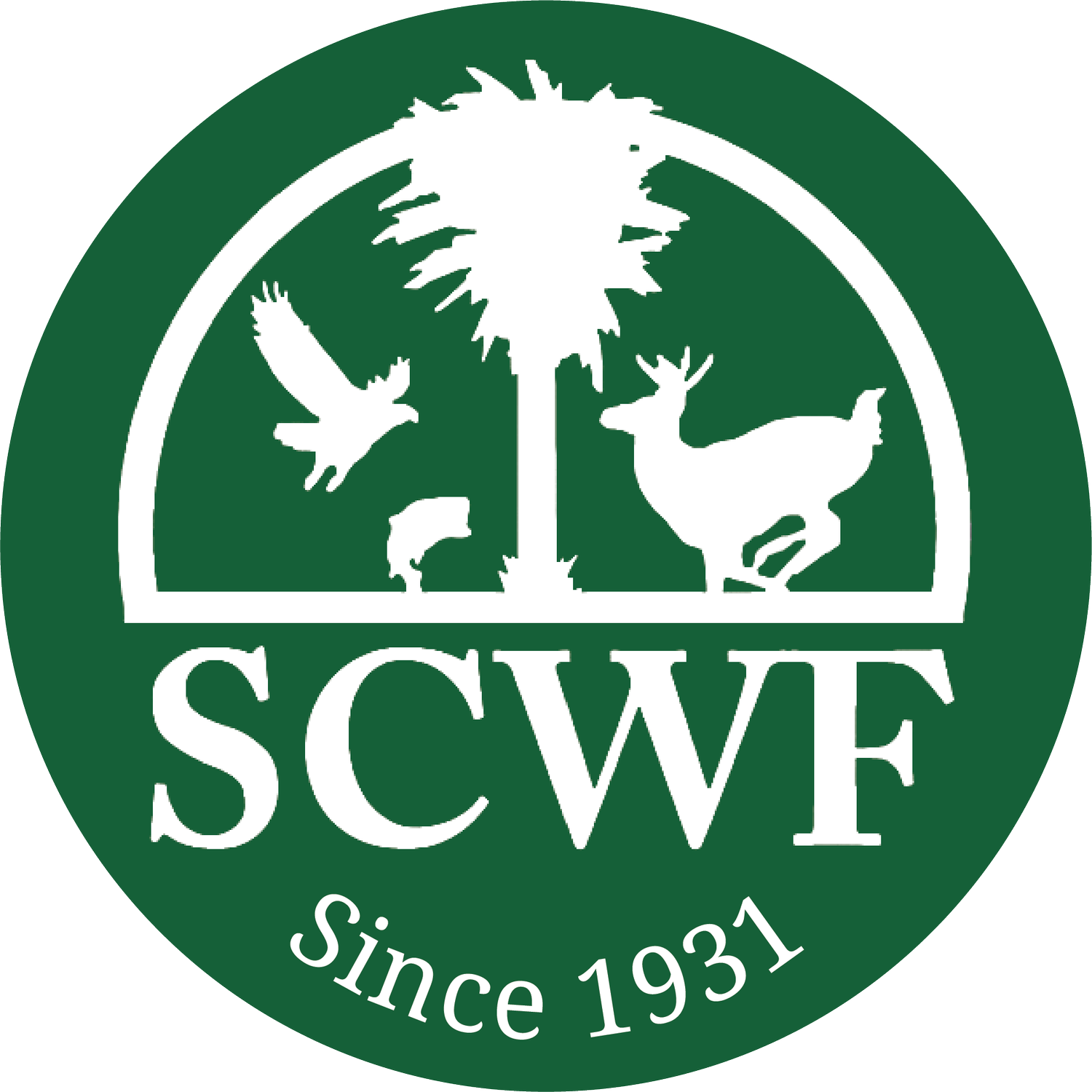Project Prothonotary
In 2019, SCWF launched Project Prothonotary, a state-wide conservation effort to install nest boxes for a beloved, yet declining bird species known as the Prothonotary Warbler. As habitat specialists, these birds seek out existing cavities in trees to build nests and raise their young. However, habitat destruction has led to less and less trees available for nesting, and that’s where nest boxes come in.
Endangered Species Act: Red Knot
Red knots are listed as federally threatened, and have had an 87% decline since the year 2000. These amazing birds fly more than 18,600 miles during their annual migration. SC’s coast plays a significant role as a stopover site for the birds to rest and recharge during their trip. Red knots have a special link to horseshoe crabs because they depend on their eggs for food during migtation stopover. Their journey of 9,300 miles each spring and each fall makes the red knot one of the longest-distance migrants in the animal kingdom.
Program offers tips on bird identification at Hopelands Gardens
Nature lovers gathered at the Hopelands Gardens guest cottage on Friday morning for a lecture on identifying birds by their sounds…… “There’s a language of birds, and they’ll tell you a lot,” said Keck about the benefits of learning to recognize bird calls. “When you hear certain birds, it can tell you things about the landscape.” Keck’s lecture emphasized birds that are in decline and what people can do to help them thrive.
Endangered Species Day: Red-cockaded woodpecker
May 3rd is National Endangered Species Day and we are recognizing the importance of wildlife conservation and restoration efforts for imperiled species like the federally endangered Red-cockaded woodpecker. This year also marks the 50th anniversary of the Endangered Species Act, a landmark piece of legislation that institutionalized our national commitment to the conservation of wildlife and their habitat.
Midlands Master Naturalist training is underway!
Upstate Nesting Project Update!
State birds are in trouble. This bipartisan bill can help.
Kite Expedition
Bird watching is a great way to connect with nature, and no birds put on a better show than the Mississippi and Swallow-tailed Kites that migrate through South Carolina each summer. From mid to late July, the birds stop to feed before migrating to South America for winter, says Jay Keck, habitat education manager for the South Carolina Wildlife Federation. The fields of Allendale County are a particularly great place to see the small raptors in action.
Enhancing Nesting Habitat for Prothonotary Warblers
Project Prothonotary is a joint conservation effort to enhance nesting habitat for Prothonotary Warblers in South Carolina. Last month, SCWF staff Jay Keck and Savannah Jordan joined Zach Steinhauser and the US Forest Service to check Prothonotary Warbler nest boxes previously installed at Sumter National Forest.
Grant from Richland County helps Irmo library go bird-friendly
Thanks to grant funding from the Richland County Conservation Commission (RCCC), the S.C. Wildlife Federation (SCWF) recently applied a material to the library’s windows to eliminate reflections on the outside of the building, making it easier for birds to avoid colliding with the structure.
KECK: For Purple Martins' Majesties
KECK: Birds of a Feather
Bird. Say it out loud. It’s not the most exciting word in our dictionary, but it represents one of the most extraordinary classes of animals inhabiting our amazing planet. Birds are capable of filling our lives with an overwhelming amount of joy, wonder, and beauty. They quite literally shine as brightly as flames when reflecting the sun’s rays, and (figuratively) shine while singing their sweet melodies during our springs and early summers.
Recent backyard bird deaths
Looking back at 2020
November News & Updates from SCWF
As we close in on the final months of 2020, fall foliage is becoming visible around the state, winter birds are arriving in SC, and deer hunting season is in full swing. Scroll down to learn more about SCWF's recent happenings!
As always, thank you for joining us in our work to preserve South Carolina's natural heritage for years to come!
Forks, Knives, and Spoonbills: A Great Success!
Thank you to all who came out to our Forks, Knives & Spoonbills dinner! Wow, what amazing food & energy from so many passionate conservationists! THANK YOU to Jay Keck for the inspiration and sharing his passion for bird conservation, and to Spotted Salamander for the creative & delicious food! Thank you also to River Rat Brewery and RNDC Distributors for beer & wine!
Click on the photo below to scroll through photos from the event:
Create wildlife habitat at home
Most people feel helpless when it comes to saving the forests around the world, but there are so many things you can do right in your own backyard and community to create wildlife habitat and make a big difference. The S.C. Wildlife Federation (SCWF) partners with the National Wildlife Federation to provide recommendations for creating and enhancing wildlife habitat in backyards as well as at schools, businesses, parks and throughout entire communities.
Increasing Focus on Wildlife Habitats
The South Carolina Wildlife Federation (SCWF) has named Jay Keck as their new Habitat Education Manager. In this role, he will plan, coordinate, implement and oversee education programs designed to encourage the creation or enhancement of wildlife habitat in backyards, parks, schoolyards, and business property.
Horseshoe Crabs & Shorebirds
SCWF had a wonderful event at Harbor Island on April 29 & 30, 2018 to observe and learn about Horseshoe Crabs & their spawning cycles, and the shorebirds that depend on the Horseshoe Crabs! HUGE THANK YOU to Dr. Al Segars (retired veterinarian & wildlife biologist with South Carolina Department of Natural Resources) and Nick Wallover (veteran shorebird biologist with SCDNR) for sharing their expertise with our group!



































